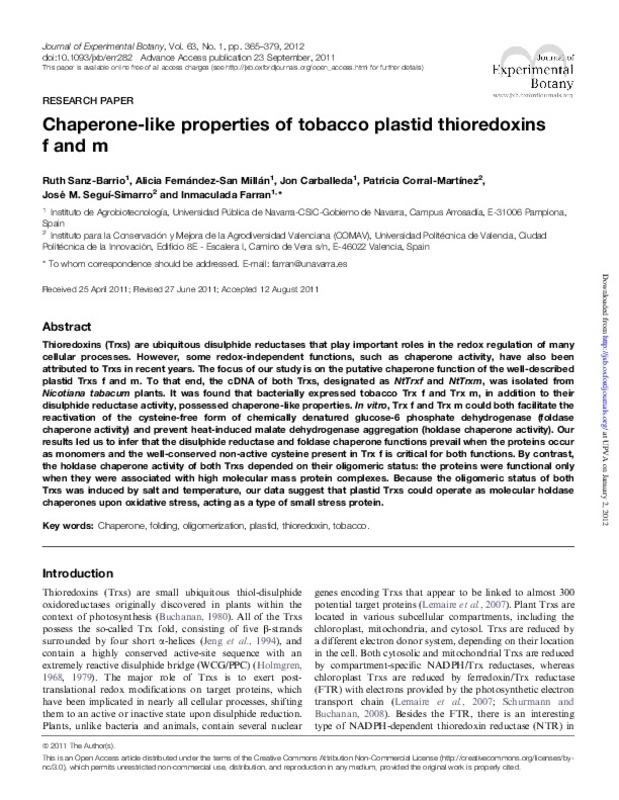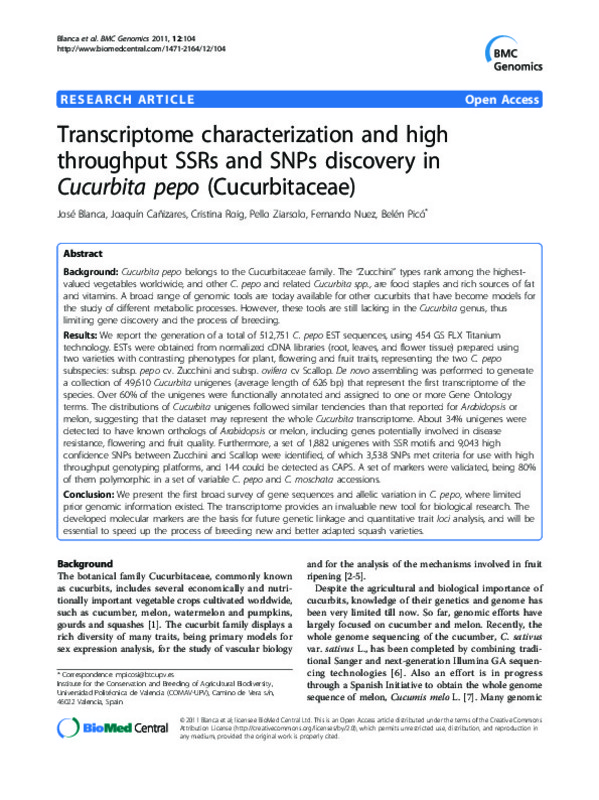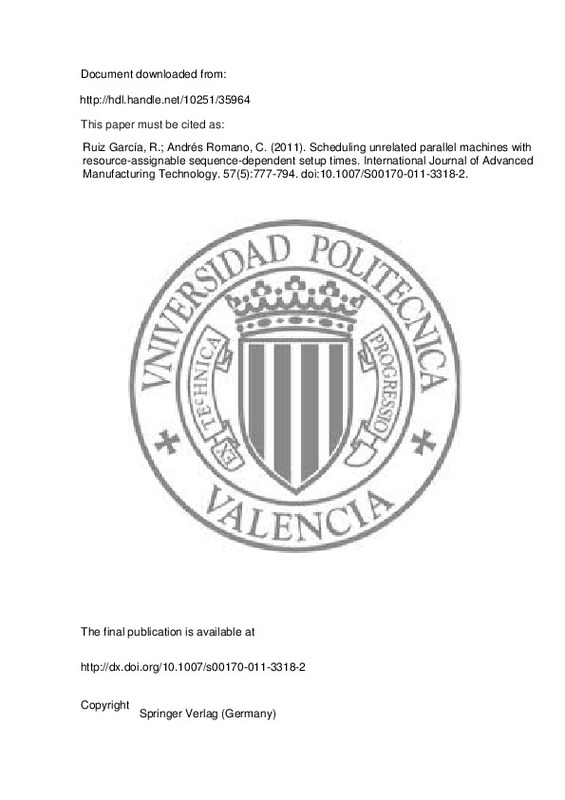Aguado-Llera, D., Martínez-Gómez, A. I., Prieto, J., Marenchino, M., Traverso, J. A., Gómez, J., … Neira, J. L. (2011). The Conformational Stability and Biophysical Properties of the Eukaryotic Thioredoxins of Pisum Sativum Are Not Family-Conserved. PLoS ONE, 6(2), e17068. doi:10.1371/journal.pone.0017068
Akhtar, M. W., Srinivas, V., Raman, B., Ramakrishna, T., Inobe, T., Maki, K., … Rao, C. M. (2004). Oligomeric Hsp33 with Enhanced Chaperone Activity. Journal of Biological Chemistry, 279(53), 55760-55769. doi:10.1074/jbc.m406333200
Andersen, J. F., Sanders, D. A. R., Gasdaska, J. R., Weichsel, A., Powis, G., & Montfort, W. R. (1997). Human Thioredoxin Homodimers: Regulation by pH, Role of Aspartate 60, and Crystal Structure of the Aspartate 60 → Asparagine Mutant†,‡. Biochemistry, 36(46), 13979-13988. doi:10.1021/bi971004s
[+]
Aguado-Llera, D., Martínez-Gómez, A. I., Prieto, J., Marenchino, M., Traverso, J. A., Gómez, J., … Neira, J. L. (2011). The Conformational Stability and Biophysical Properties of the Eukaryotic Thioredoxins of Pisum Sativum Are Not Family-Conserved. PLoS ONE, 6(2), e17068. doi:10.1371/journal.pone.0017068
Akhtar, M. W., Srinivas, V., Raman, B., Ramakrishna, T., Inobe, T., Maki, K., … Rao, C. M. (2004). Oligomeric Hsp33 with Enhanced Chaperone Activity. Journal of Biological Chemistry, 279(53), 55760-55769. doi:10.1074/jbc.m406333200
Andersen, J. F., Sanders, D. A. R., Gasdaska, J. R., Weichsel, A., Powis, G., & Montfort, W. R. (1997). Human Thioredoxin Homodimers: Regulation by pH, Role of Aspartate 60, and Crystal Structure of the Aspartate 60 → Asparagine Mutant†,‡. Biochemistry, 36(46), 13979-13988. doi:10.1021/bi971004s
Arnold, K., Bordoli, L., Kopp, J., & Schwede, T. (2005). The SWISS-MODEL workspace: a web-based environment for protein structure homology modelling. Bioinformatics, 22(2), 195-201. doi:10.1093/bioinformatics/bti770
Arsova, B., Hoja, U., Wimmelbacher, M., Greiner, E., Üstün, Ş., Melzer, M., … Börnke, F. (2010). Plastidial Thioredoxin z Interacts with Two Fructokinase-Like Proteins in a Thiol-Dependent Manner: Evidence for an Essential Role in Chloroplast Development in Arabidopsis and Nicotiana benthamiana. The Plant Cell, 22(5), 1498-1515. doi:10.1105/tpc.109.071001
Balmer, Y., Koller, A., del Val, G., Manieri, W., Schurmann, P., & Buchanan, B. B. (2002). Proteomics gives insight into the regulatory function of chloroplast thioredoxins. Proceedings of the National Academy of Sciences, 100(1), 370-375. doi:10.1073/pnas.232703799
Balmer, Y., Vensel, W. H., Cai, N., Manieri, W., Schurmann, P., Hurkman, W. J., & Buchanan, B. B. (2006). A complete ferredoxin/thioredoxin system regulates fundamental processes in amyloplasts. Proceedings of the National Academy of Sciences, 103(8), 2988-2993. doi:10.1073/pnas.0511040103
Barajas-López, J. de D., Serrato, A. J., Cazalis, R., Meyer, Y., Chueca, A., Reichheld, J. P., & Sahrawy, M. (2010). Circadian regulation of chloroplastic f and m thioredoxins through control of the CCA1 transcription factor. Journal of Experimental Botany, 62(6), 2039-2051. doi:10.1093/jxb/erq394
De Dios Barajas-López, J., Serrato, A. J., Olmedilla, A., Chueca, A., & Sahrawy, M. (2007). Localization in Roots and Flowers of Pea Chloroplastic Thioredoxin f and Thioredoxin m Proteins Reveals New Roles in Nonphotosynthetic Organs. Plant Physiology, 145(3), 946-960. doi:10.1104/pp.107.105593
Barranco-Medina, S., Krell, T., Bernier-Villamor, L., Sevilla, F., Lazaro, J.-J., & Dietz, K.-J. (2008). Hexameric oligomerization of mitochondrial peroxiredoxin PrxIIF and formation of an ultrahigh affinity complex with its electron donor thioredoxin Trx-o. Journal of Experimental Botany, 59(12), 3259-3269. doi:10.1093/jxb/ern177
Benitez-Alfonso, Y., Cilia, M., Roman, A. S., Thomas, C., Maule, A., Hearn, S., & Jackson, D. (2009). Control of Arabidopsis meristem development by thioredoxin-dependent regulation of intercellular transport. Proceedings of the National Academy of Sciences, 106(9), 3615-3620. doi:10.1073/pnas.0808717106
Berndt, C., Lillig, C. H., & Holmgren, A. (2008). Thioredoxins and glutaredoxins as facilitators of protein folding. Biochimica et Biophysica Acta (BBA) - Molecular Cell Research, 1783(4), 641-650. doi:10.1016/j.bbamcr.2008.02.003
Bock, R., & Warzecha, H. (2010). Solar-powered factories for new vaccines and antibiotics. Trends in Biotechnology, 28(5), 246-252. doi:10.1016/j.tibtech.2010.01.006
Boston, R. S., Viitanen, P. V., & Vierling, E. (1996). Molecular chaperones and protein folding in plants. Plant Molecular Biology, 32(1-2), 191-222. doi:10.1007/bf00039383
Buchanan, B. B. (1980). Role of Light in the Regulation of Chloroplast Enzymes. Annual Review of Plant Physiology, 31(1), 341-374. doi:10.1146/annurev.pp.31.060180.002013
Capitani, G., & Schürmann, P. (2004). On the Quaternary Assembly of Spinach Chloroplast Thioredoxin m. Photosynthesis Research, 79(3), 281-285. doi:10.1023/b:pres.0000017197.03467.81
Chebotareva, N. A., Kurganov, B. I., & Livanova, N. B. (2004). Biochemical effects of molecular crowding. Biochemistry (Moscow), 69(11), 1239-1251. doi:10.1007/s10541-005-0070-y
Cheng, G., Basha, E., Wysocki, V. H., & Vierling, E. (2008). Insights into Small Heat Shock Protein and Substrate Structure during Chaperone Action Derived from Hydrogen/Deuterium Exchange and Mass Spectrometry. Journal of Biological Chemistry, 283(39), 26634-26642. doi:10.1074/jbc.m802946200
Chibani, K., Wingsle, G., Jacquot, J.-P., Gelhaye, E., & Rouhier, N. (2009). Comparative Genomic Study of the Thioredoxin Family in Photosynthetic Organisms with Emphasis on Populus trichocarpa. Molecular Plant, 2(2), 308-322. doi:10.1093/mp/ssn076
Collin, V., Lamkemeyer, P., Miginiac-Maslow, M., Hirasawa, M., Knaff, D. B., Dietz, K.-J., & Issakidis-Bourguet, E. (2004). Characterization of Plastidial Thioredoxins from Arabidopsis Belonging to the New y-Type. Plant Physiology, 136(4), 4088-4095. doi:10.1104/pp.104.052233
Daniell, H., Singh, N. D., Mason, H., & Streatfield, S. J. (2009). Plant-made vaccine antigens and biopharmaceuticals. Trends in Plant Science, 14(12), 669-679. doi:10.1016/j.tplants.2009.09.009
Del Val, G., Maurer, F., Stutz, E., & Schürmann, P. (1999). Modification of the reactivity of spinach chloroplast thioredoxin f by site-directed mutagenesis. Plant Science, 149(2), 183-190. doi:10.1016/s0168-9452(99)00168-5
Ellis, R. J. (2001). Macromolecular crowding: an important but neglected aspect of the intracellular environment. Current Opinion in Structural Biology, 11(1), 114-119. doi:10.1016/s0959-440x(00)00172-x
Geigenberger, P., Kolbe, A., & Tiessen, A. (2005). Redox regulation of carbon storage and partitioning in response to light and sugars. Journal of Experimental Botany, 56(416), 1469-1479. doi:10.1093/jxb/eri178
Gronenborn, A. M., Clore, G. M., Louis, J. M., & Wingfield, P. T. (2008). Is human thioredoxin monomeric or dimeric? Protein Science, 8(2), 426-429. doi:10.1110/ps.8.2.426
Holmgren, A. (1968). Thioredoxin. 6. The Amino Acid Sequence of the Protein from Escherichia coli B. European Journal of Biochemistry, 6(4), 475-484. doi:10.1111/j.1432-1033.1968.tb00470.x
Holmgren, A. (1995). Thioredoxin structure and mechanism: conformational changes on oxidation of the active-site sulfhydryls to a disulfide. Structure, 3(3), 239-243. doi:10.1016/s0969-2126(01)00153-8
Issakidis-Bourguet, E., Mouaheb, N., Meyer, Y., & Miginiac-Maslow, M. (2008). Heterologous complementation of yeast reveals a new putative function for chloroplast m-type thioredoxin. The Plant Journal, 25(2), 127-135. doi:10.1046/j.0960-7412.2000.00943.x
Jang, H. H., Lee, K. O., Chi, Y. H., Jung, B. G., Park, S. K., Park, J. H., … Lee, S. Y. (2004). Two Enzymes in One. Cell, 117(5), 625-635. doi:10.1016/j.cell.2004.05.002
Jeng, M.-F., Campbell, A. P., Begley, T., Holmgren, A., Case, D. A., Wright, P. E., & Dyson, H. J. (1994). High-resolution solution structures of oxidized and reduced Escherichia coli thioredoxin. Structure, 2(9), 853-868. doi:10.1016/s0969-2126(94)00086-7
KERN, R., MALKI, A., HOLMGREN, A., & RICHARME, G. (2003). Chaperone properties of Escherichia coli thioredoxin and thioredoxin reductase. Biochemical Journal, 371(3), 965-972. doi:10.1042/bj20030093
Kiefer, F., Arnold, K., Kunzli, M., Bordoli, L., & Schwede, T. (2009). The SWISS-MODEL Repository and associated resources. Nucleic Acids Research, 37(Database), D387-D392. doi:10.1093/nar/gkn750
Kim, S. Y., Jang, H. H., Lee, J. R., Sung, N. R., Lee, H. B., Lee, D. H., … Lee, S. Y. (2009). Oligomerization and chaperone activity of a plant 2-Cys peroxiredoxin in response to oxidative stress. Plant Science, 177(3), 227-232. doi:10.1016/j.plantsci.2009.05.010
Kthiri, F., Le, H.-T., Tagourti, J., Kern, R., Malki, A., Caldas, T., … Richarme, G. (2008). The thioredoxin homolog YbbN functions as a chaperone rather than as an oxidoreductase. Biochemical and Biophysical Research Communications, 374(4), 668-672. doi:10.1016/j.bbrc.2008.07.080
LaVallie, E. R., Lu, Z., Diblasio-Smith, E. A., Collins-Racie, L. A., & McCoy, J. M. (2000). [21] Thioredoxin as a fusion partner for production of soluble recombinant proteins in Escherichia coli. Applications of Chimeric Genes and Hybrid Proteins Part A: Gene Expression and Protein Purification, 322-340. doi:10.1016/s0076-6879(00)26063-1
Lee, J. R., Lee, S. S., Jang, H. H., Lee, Y. M., Park, J. H., Park, S.-C., … Lee, S. Y. (2009). Heat-shock dependent oligomeric status alters the function of a plant-specific thioredoxin-like protein, AtTDX. Proceedings of the National Academy of Sciences, 106(14), 5978-5983. doi:10.1073/pnas.0811231106
Lemaire, S. D., Michelet, L., Zaffagnini, M., Massot, V., & Issakidis-Bourguet, E. (2007). Thioredoxins in chloroplasts. Current Genetics, 51(6), 343-365. doi:10.1007/s00294-007-0128-z
Lennon, B. W. (2000). Twists in Catalysis: Alternating Conformations of Escherichia coli Thioredoxin Reductase. Science, 289(5482), 1190-1194. doi:10.1126/science.289.5482.1190
Livak, K. J., & Schmittgen, T. D. (2001). Analysis of Relative Gene Expression Data Using Real-Time Quantitative PCR and the 2−ΔΔCT Method. Methods, 25(4), 402-408. doi:10.1006/meth.2001.1262
Maeda, K., Hägglund, P., Finnie, C., Svensson, B., & Henriksen, A. (2008). Crystal structures of barley thioredoxin h isoforms HvTrxh1 and HvTrxh2 reveal features involved in protein recognition and possibly in discriminating the isoform specificity. Protein Science, 17(6), 1015-1024. doi:10.1110/ps.083460308
Marchand, C. H., Vanacker, H., Collin, V., Issakidis-Bourguet, E., Maréchal, P. L., & Decottignies, P. (2010). Thioredoxin targets in Arabidopsis roots. PROTEOMICS, 10(13), 2418-2428. doi:10.1002/pmic.200900835
Mark, D. F., & Richardson, C. C. (1976). Escherichia coli thioredoxin: a subunit of bacteriophage T7 DNA polymerase. Proceedings of the National Academy of Sciences, 73(3), 780-784. doi:10.1073/pnas.73.3.780
Marri, L., Zaffagnini, M., Collin, V., Issakidis-Bourguet, E., Lemaire, S. D., Pupillo, P., … Trost, P. (2009). Prompt and Easy Activation by Specific Thioredoxins of Calvin Cycle Enzymes of Arabidopsis thaliana Associated in the GAPDH/CP12/PRK Supramolecular Complex. Molecular Plant, 2(2), 259-269. doi:10.1093/mp/ssn061
Meyer, Y., Reichheld, J. P., & Vignols, F. (2005). Thioredoxins inArabidopsis and other plants. Photosynthesis Research, 86(3), 419-433. doi:10.1007/s11120-005-5220-y
Michelet, L., Zaffagnini, M., Marchand, C., Collin, V., Decottignies, P., Tsan, P., … Lemaire, S. D. (2005). Glutathionylation of chloroplast thioredoxin f is a redox signaling mechanism in plants. Proceedings of the National Academy of Sciences, 102(45), 16478-16483. doi:10.1073/pnas.0507498102
Miernyk, J. A. (1999). Protein Folding in the Plant Cell. Plant Physiology, 121(3), 695-703. doi:10.1104/pp.121.3.695
Montrichard, F., Alkhalfioui, F., Yano, H., Vensel, W. H., Hurkman, W. J., & Buchanan, B. B. (2009). Thioredoxin targets in plants: The first 30 years. Journal of Proteomics, 72(3), 452-474. doi:10.1016/j.jprot.2008.12.002
Motohashi, K., Kondoh, A., Stumpp, M. T., & Hisabori, T. (2001). Comprehensive survey of proteins targeted by chloroplast thioredoxin. Proceedings of the National Academy of Sciences, 98(20), 11224-11229. doi:10.1073/pnas.191282098
Motohashi, K., Koyama, F., Nakanishi, Y., Ueoka-Nakanishi, H., & Hisabori, T. (2003). Chloroplast Cyclophilin Is a Target Protein of Thioredoxin. Journal of Biological Chemistry, 278(34), 31848-31852. doi:10.1074/jbc.m304258200
Nordstrand, K., Åslund, F., Holmgren, A., Otting, G., & Berndt, K. D. (1999). NMR structure of Escherichia coli glutaredoxin 3-glutathione mixed disulfide complex: implications for the enzymatic mechanism 1 1Edited by P. E. Wright. Journal of Molecular Biology, 286(2), 541-552. doi:10.1006/jmbi.1998.2444
Park, S. K., Jung, Y. J., Lee, J. R., Lee, Y. M., Jang, H. H., Lee, S. S., … Lee, S. Y. (2009). Heat-Shock and Redox-Dependent Functional Switching of an h-Type Arabidopsis Thioredoxin from a Disulfide Reductase to a Molecular Chaperone. Plant Physiology, 150(2), 552-561. doi:10.1104/pp.109.135426
Pérez-Ruiz, J. M., & Cejudo, F. J. (2009). A proposed reaction mechanism for rice NADPH thioredoxin reductase C, an enzyme with protein disulfide reductase activity. FEBS Letters, 583(9), 1399-1402. doi:10.1016/j.febslet.2009.03.067
Pigiet, V. P., & Schuster, B. J. (1986). Thioredoxin-catalyzed refolding of disulfide-containing proteins. Proceedings of the National Academy of Sciences, 83(20), 7643-7647. doi:10.1073/pnas.83.20.7643
Prasad, B. D., Goel, S., & Krishna, P. (2010). In Silico Identification of Carboxylate Clamp Type Tetratricopeptide Repeat Proteins in Arabidopsis and Rice As Putative Co-Chaperones of Hsp90/Hsp70. PLoS ONE, 5(9), e12761. doi:10.1371/journal.pone.0012761
Qin, J., Clore, G. M., Kennedy, W. P., Kuszewski, J., & Gronenborn, A. M. (1996). The solution structure of human thioredoxin complexed with its target from Ref-1 reveals peptide chain reversal. Structure, 4(5), 613-620. doi:10.1016/s0969-2126(96)00065-2
Ren, G., Lin, Z., Tsou, C., & Wang, C. (2003). Effects of Macromolecular Crowding on the Unfolding and the Refolding of d-Glyceraldehyde-3-Phosophospate Dehydrogenase. Journal of Protein Chemistry, 22(5), 431-439. doi:10.1023/b:jopc.0000005458.08802.11
Sahrawy, M., Hecht, V., Lopez-Jaramillo, J., Chueca, A., Chartier, Y., & Meyer, Y. (1996). Intron position as an evolutionary marker of thioredoxins and thioredoxin domains. Journal of Molecular Evolution, 42(4), 422-431. doi:10.1007/bf02498636
Saitoh, M. (1998). Mammalian thioredoxin is a direct inhibitor of apoptosis signal-regulating kinase (ASK) 1. The EMBO Journal, 17(9), 2596-2606. doi:10.1093/emboj/17.9.2596
Sanz-Barrio, R., Millán, A. F.-S., Corral-Martínez, P., Seguí-Simarro, J. M., & Farran, I. (2011). Tobacco plastidial thioredoxins as modulators of recombinant protein production in transgenic chloroplasts. Plant Biotechnology Journal, 9(6), 639-650. doi:10.1111/j.1467-7652.2011.00608.x
Scheibe, R., & Anderson, L. E. (1981). Dark modulation of NADP-dependent malate dehydrogenase and glucose-6-phosphate dehydrogenase in the chloroplast. Biochimica et Biophysica Acta (BBA) - Bioenergetics, 636(1), 58-64. doi:10.1016/0005-2728(81)90075-x
Schürmann, P., & Buchanan, B. B. (2008). The Ferredoxin/Thioredoxin System of Oxygenic Photosynthesis. Antioxidants & Redox Signaling, 10(7), 1235-1274. doi:10.1089/ars.2007.1931
Seguı́-Simarro, J. ., Testillano, P. ., & Risueño, M. . (2003). Hsp70 and Hsp90 change their expression and subcellular localization after microspore embryogenesis induction in Brassica napus L. Journal of Structural Biology, 142(3), 379-391. doi:10.1016/s1047-8477(03)00067-4
Serrato, A. J., Pérez-Ruiz, J. M., Spínola, M. C., & Cejudo, F. J. (2004). A Novel NADPH Thioredoxin Reductase, Localized in the Chloroplast, Which Deficiency Causes Hypersensitivity to Abiotic Stress in Arabidopsis thaliana. Journal of Biological Chemistry, 279(42), 43821-43827. doi:10.1074/jbc.m404696200
SERRATO, A. J., YUBERO-SERRANO, E. M., SANDALIO, L. M., MUÑOZ-BLANCO, J., CHUECA, A., CABALLERO, J. L., & SAHRAWY, M. (2009). cpFBPaseII, a novel redox-independent chloroplastic isoform of fructose-1,6-bisphosphatase. Plant, Cell & Environment, 32(7), 811-827. doi:10.1111/j.1365-3040.2009.01960.x
SOULIE, J.-M., BUC, J., RIVIERE, M., & RICARD, J. (1985). Equilibrium binding of thioredoxin FB to chloroplastic fructose bisphosphatase. Evidence for a thioredoxin site distinct from the active site. European Journal of Biochemistry, 152(3), 565-568. doi:10.1111/j.1432-1033.1985.tb09232.x
Sun, L., Ren, H., Liu, R., Li, B., Wu, T., Sun, F., … Dong, H. (2010). An h-Type Thioredoxin Functions in Tobacco Defense Responses to Two Species of Viruses and an Abiotic Oxidative Stress. Molecular Plant-Microbe Interactions, 23(11), 1470-1485. doi:10.1094/mpmi-01-10-0029
Traverso, J. A., Vignols, F., Cazalis, R., Serrato, A. J., Pulido, P., Sahrawy, M., … Chueca, A. (2008). Immunocytochemical localization of Pisum sativum TRXs f and m in non-photosynthetic tissues. Journal of Experimental Botany, 59(6), 1267-1277. doi:10.1093/jxb/ern037
Weichsel, A., Gasdaska, J. R., Powis, G., & Montfort, W. R. (1996). Crystal structures of reduced, oxidized, and mutated human thioredoxins: evidence for a regulatory homodimer. Structure, 4(6), 735-751. doi:10.1016/s0969-2126(96)00079-2
Yasukawa, T., Kanei-Ishii, C., Maekawa, T., Fujimoto, J., Yamamoto, T., & Ishii, S. (1995). Increase of Solubility of Foreign Proteins in Escherichia coli by Coproduction of the Bacterial Thioredoxin. Journal of Biological Chemistry, 270(43), 25328-25331. doi:10.1074/jbc.270.43.25328
Yuan, S., Duan, H., Liu, C., Liu, X., Liu, T., Tao, H., & Zhang, Z. (2004). The role of thioredoxin and disulfide isomerase in the expression of the snake venom thrombin-like enzyme calobin in Escherichia coli BL21 (DE3). Protein Expression and Purification, 38(1), 51-60. doi:10.1016/j.pep.2004.08.004
Zybailov, B., Rutschow, H., Friso, G., Rudella, A., Emanuelsson, O., Sun, Q., & van Wijk, K. J. (2008). Sorting Signals, N-Terminal Modifications and Abundance of the Chloroplast Proteome. PLoS ONE, 3(4), e1994. doi:10.1371/journal.pone.0001994
[-]












